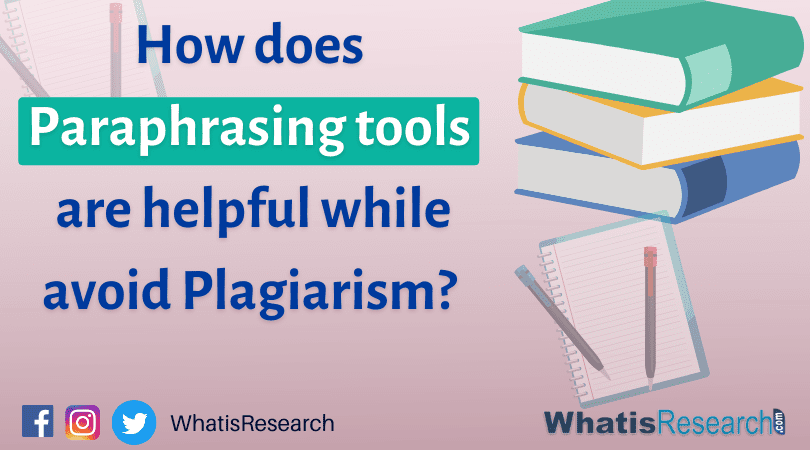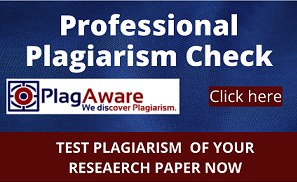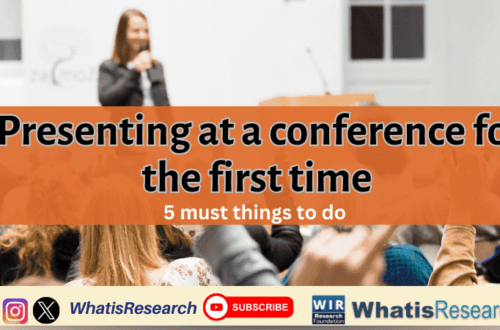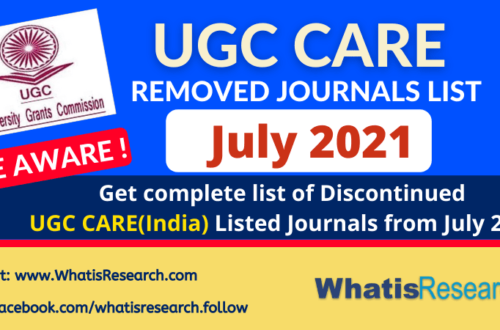According to a study, 17% of the students have cheated on assignments. On the other hand, 1.5 billion web pages in the online world feature duplicated content. Here we will discuss How does Paraphrasing tools are Helpful While Avoid Plagiarism? This should give you a perspective of how common plagiarism is.
How does Paraphrasing tools are helpful while avoid Plagiarism?
That’s when writers need to take responsibility and remove plagiarism from their writing before they submit it. Whether they’re an academic writer or SEO content creator, avoiding plagiarism is a necessity required by their writing environment.
So, how do paraphrasing tools fit into this frame? Because they help you rewrite content effectively and end up removing plagiarism. But, how exactly does that work? Moreover, why should writers choose them over rewriting manually? Let’s find out:
3 Types of Plagiarism you must avoid
Plagiarism has many types. While the primary definition of plagiarism is to copy or duplicate another writer’s work, it can happen when a writer copies their own work as well. On the other hand, plagiarism isn’t just about copying a piece of text in its entirety.
Sometimes, plagiarism can be in bits and pieces. However, the one constant throughout all plagiarism types is that they are all unethical. That’s why it’s a necessity to avoid them all.
To give you an eagle eye for each one, here are three main types of plagiarism you must avoid with the help of paraphrasing tools:
1. Direct/Complete Plagiarism
Direct plagiarism is when a writer copies an entire draft of content written by another writer. It’s considered the most severe type of plagiarism with no reversible damage. In other words, it will ruin the writer’s reputation for good.
2. Patchwork Or Mosaic Plagiarism
Patchwork or mosaic plagiarism is yet another highly unethical type of plagiarism. In this one, the writer copies bits and chunks or changes content just enough to pass the plagiarism check.
3. Auto/Self Plagiarism
Auto plagiarism is when a writer accidentally rewrites their own content. It may not be unethical, but it’s equally harmful to any writing environment’s reputation.
Why is it Important to avoid Plagiarism?
Plagiarism is unethical, and at this point, you should know the harmful tendencies that it has. For every writer, plagiarism gives three main reasons for you to avoid it. Here they are:
· Writer’s Reputation
A writer’s reputation depends on how well they formulate original content—in academia or professional settings. Plagiarism can void that and harm their reputation for good. That’s why it’s a necessity for writers to avoid it to keep their status intact.
· Academic grades or SEO standing
Academic grades, and high SEO ranks, both of these elements depend on original and plagiarism-free content. It’s not only a necessity to avoid to ensure better prowess in SERP; it’s also important to garner good grades.
· Because it’s unethical
As mentioned before, all types of plagiarism, except auto or accidental plagiarism, are unethical. That is why a writer shouldn’t need any more reason than this one alone. It’s unethical, harmful, and an unfair practice; therefore, it should be avoided.
4 Ways Paraphrasing tools are helpful to avoid plagiarism
Paraphrasing tools are helpful in many ways to writers today. They can help you recreate or rewrite content without any hassle today. One of the primary reasons their popularity keeps increasing is because of their ability to remove plagiarism
They can help a writer:
- Avoid plagiarism
- Remove duplicity
- Recreate content from scratch
- Or change it just enough
- Improve content tone
- Enhance fluidity or readability
Besides all these factors, a paraphrasing tool can turn the content on its head. Making it unrecognizable from the original. Why is this factor important for writers today? Because it can help them avoid plagiarism while making the content ideal for SEO or academia.
So, just how do you get there with the help of a paraphrasing tool? To help you understand these aspects, here are four ways to use paraphrasing tools today:
1. They eewrite Plagiarized bits
Finding plagiarized content is the first task of any writer today. As mentioned previously, content has many types of plagiarism. However, the one most difficult to detect is mosaic plagiarism. Since it hides so well within original content, it can be difficult to detect.
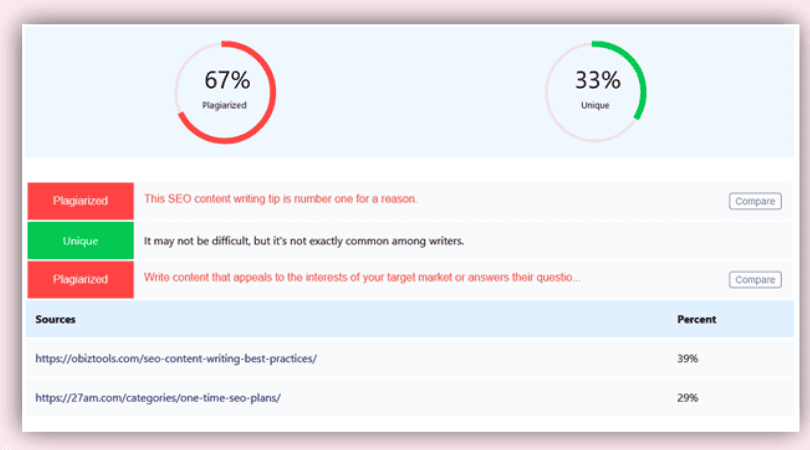
However, a paraphrasing tool usually accompanies a plagiarism checker. It’s imperative to use one because they can find it just like this:
As you can notice, this content is only one-third original, while two-thirds are plagiarized. This is a common example of mosaic plagiarism, as it accompanies original content within it. Since the tool has detected it, let’s seek help from the paraphrasing tool to rephrase it.
Rather than copying all the text, you can use a paraphrase tool to paraphrase the words.
Here, you can see the plagiarized content posted on the left-hand side of your screen:
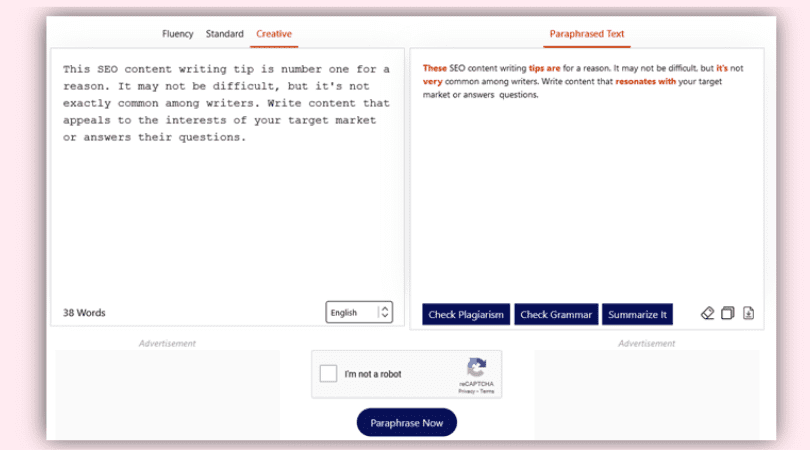
While on the left-hand side, you can see the changed content by this tool. On the top bar, you can notice the content tone is set to creative, just to change it enough.
Now that the content has changed, there’s only one way to find out, and that is by rechecking it:
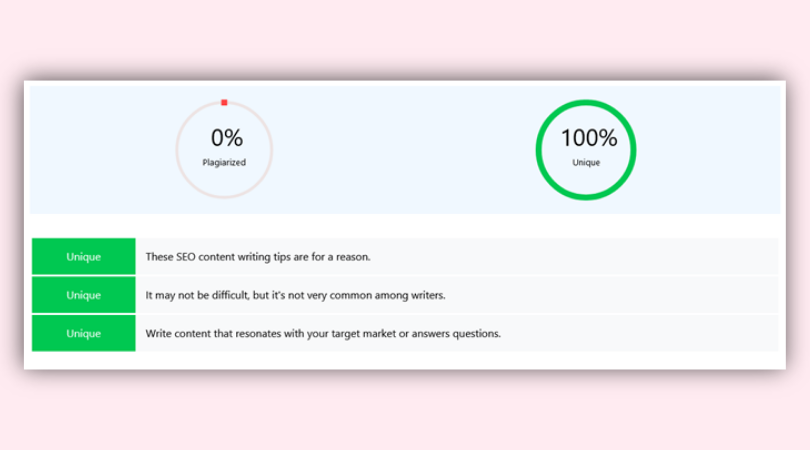
Here, you can see the content does, in fact, have no plagiarism left in it. This proves and demonstrates how a paraphrasing tool can help remove mosaic plagiarism from a specific bit of content.
1. They improve existing content
Plagiarism is one of the most common problems for writers; that’s a given. However, another problem they face is the lackluster content, which ruins their text further. Besides finding mosaic, direct, or auto-plagiarism in their writing, bad or influent content doesn’t help either.
That’s when a paraphrasing tool puts forth another incredible offer, like this:

As you can see, these three content tones are good enough for writers of all kinds. In other words, they can be used by all sorts of writers to improve, revamp or make their content better. The additional benefit of doing it all? It will avoid plagiarism in the process.
To help you understand here is what you should do:
- Use fluency to improve content tone
- Click on standard to change it enough to make it fluent
- Use the creative option to make content turn on its head
Lastly, use all of the options to avoid plagiarism.
2. They Revise Enough To Help You Cite
As we saw in the demonstration earlier, these tools can help us rewrite content enough to avoid plagiarism. However, the idea of the original writer should be credited. Therefore, you need to use citation styles such as:
- APA
- MLA
- Chicago
Using paraphrased content by the tool alongside these citation styles will all but guarantee plagiarism-free content for you.
3. They revamp the content upside down
As seen in the images above, a viable paraphrasing tool offers you three or more content tone options. Each one of them is ideal for removing or revamping content. How do they do that?
- They switch the content’s flow
- They use alternative words, i.e., synonyms
- Changing specific terms
- Using simpler words
By implementing these strategies, paraphrasing tools don’t only vastly improve the content, they effectively remove similarities from the content. That’s why their usage is increasing as we speak.
Conclusion
These are some factors that ensure how a paraphrasing tool can remove plagiarism. Therefore, pick a viable tool and use it to effectively remove plagiarism from your writings.
Also Read: Best plagiarism checker for research papers free
Related Articles: List of top 4 paraphrasing tools for content writers
Related Articles: 7 Best tips for writing an outstanding research paper

